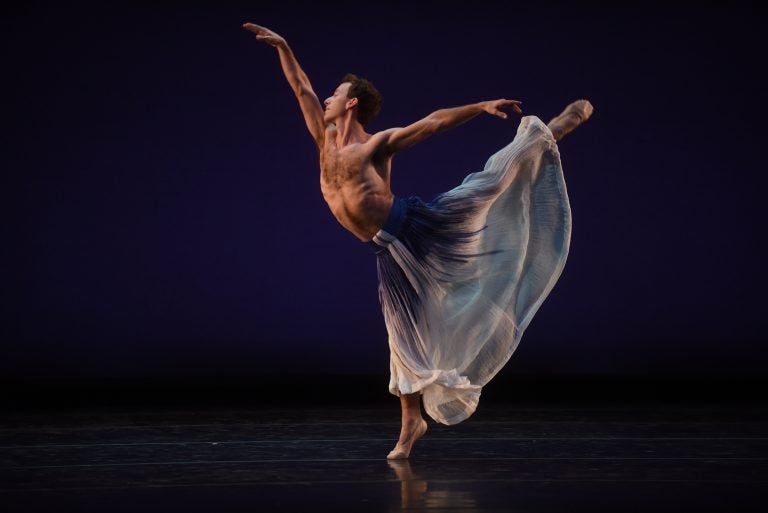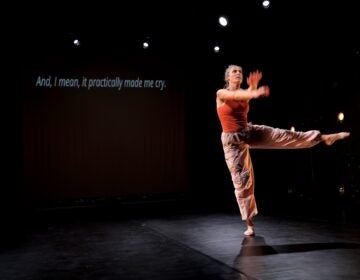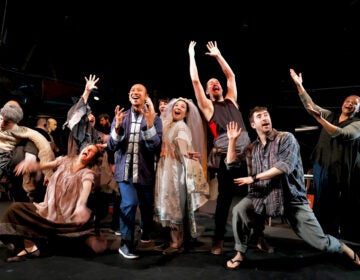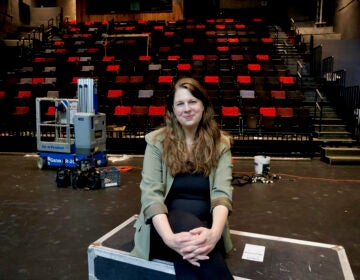Choreographer Mark Morris bringing dance benefits to people living with Parkinson’s
After a 14-year hiatus, Mark Morris returns to Philadelphia as artist-in-residence.

Since 2001, the Mark Morris Dance Group has been working with people with Parkinson’s, designing dance classes around their needs and abilities. (Hilary Schwab)
The Mark Morris Dance Group has not performed in Philadelphia for 14 years, but that doesn’t mean Philly hasn’t been on his mind.
“I come here periodically because I’m working on a memoir with someone who lives near Philadelphia. So I come pretty frequently,” said Morris. “But to perform here — we’re thrilled, of course. It’s been a long time.”
Morris, one of America’s premiere choreographers, is coming to town in a big way as the first artist-in-residence for the Annenberg Center, the performing arts complex at the University of Pennsylvania.
Publicly, the Mark Morris Dance Group will twice perform “Dance to American Music,” a program of works set to the music of American composers George Gershwin, Henry Cowell, and — a particular favorite of Morris — Lou Harrison.
He will also teach a master class for students from Penn, Drexel, Temple, and UArts, and perform for area high school students. On Saturday, he will participate in a medical symposium about Parkinson’s disease treatment.
Since 2001, when the company moved into its own building in Brooklyn, the Mark Morris Dance Group has been working with people with Parkinson’s, designing dance classes around their needs and abilities in an ongoing program called Dancing For PD.
“It has absolute therapeutic value, but I’m not calling it a medical treatment,” said Morris. “It’s not a medical situation. It’s an art situation. Those are related in that art has certain value, that is not the same as medicine or sport, but is urgent for the success of any civilization.”
Morris said the classes are meant to be “fun and social,” drawing people out of their homes when advanced Parkinson’s would have otherwise kept them inside.
On Saturday, neurologists with Penn Medicine treating and researching Parkinson’s will join Morris and his dancers for a daylong symposium about the possible therapeutic benefits of movement.
This is the first season for the Annenberg’s artistic and executive director, Christopher Gruits, who launched an artist-in-residence program to bring together departments across campus.
“It allows us to bring together a lot of disparate groups,” said Gruits. “Penn Medicine faculty, staff, and students studying neurology and movement disorders. And, by partnering with the Parkinson Council to bring a larger symposium day, to attract medical professionals and caregivers.”
The Annenberg residency also includes screening a series of films selected by Morris. They range from the seldom seen to the highly obscure. For example, the Shirley Temple film “The Blue Bird” (1940) and the Dr. Seuss adaptation “The 5,000 Fingers of Dr. T” (1953) might be familiar by reputation.
“But something like ‘Hallelujah, I’m a Bum’ (1933), nobody knows that,” said Morris. “It’s so fabulous and so bizarre and wonderful and strange. It rhymes sometimes, and sings and talks in different ways. It’s really quite amazing.”
The four-film series also includes the Rodgers and Hart musical “Love Me Tonight” (1932) with Maurice Chevalier.
The Annenberg Center describes the series as films showing the breadth of the American musical genre. Morris denies he had anything so academic on his mind.
“I like them,” he said. “I thought that was the requirement.”
WHYY is your source for fact-based, in-depth journalism and information. As a nonprofit organization, we rely on financial support from readers like you. Please give today.





